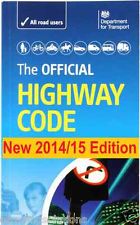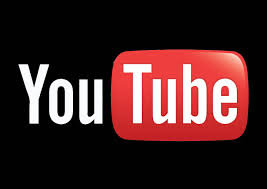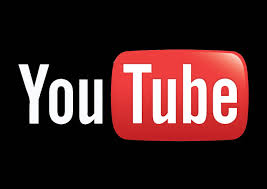Test Information
There are sites that will charge you a fee to book your driving theory and practical test. These sites can charge you up to £50 booking fee, the links below are the correct sites for booking your tests, the theory should cost £23 and the practical test £62
Theory Test Booking and Practical Test Booking
SHOW ME, TELL ME QUESTIONS
Theory Test
The UK driving theory test does not publish the actual questions used in the test, this is to encourage learner drivers and motorcycle riders to read, learn and actually think about the highway code rather than just learn the questions and answers.
The Driving Theory and Hazard PerceptionTest
Below is what happens in the Car and Motorcycle Theory Test.
The Theory Test was first introduced 1996. Often referred to as the 'written test' the original theory test used actual papers that the candidate marked with a pencil. The test has been revised over the years with the introduction of computerised touch screens, hazard perception video clips, case study questions and an increase in the number of questions.
You need to pass the theory test before applying for a practical driving test.
1) You should arrive at the Theory test centre in plenty of time, ideally 15 minutes before the start of the test.
Your driving licence is checked by the theory test centre staff. You will be asked to put any belongings such as bags etc into a locker.
2) Your will be shown to your test booth where the test will start once you are ready.
3) You will be able to have a 15 minute practice session if required.
4) You will start with the multiple choice theory test using the touch screen to select your answer/s. You will have 57 minutes to answer the 50 multiple choice questions. The questions will come up one at a time.
If you are not sure of an answer you can 'flag' the question and come back to it later on, and you can also change your answer/s if you think you have made a mistake.
Five of the questions you will be asked will be based upon a case study. You will be given a paragraph or several paragraphs of information relating to an imaginary scenario (such as a trip you may be taking in your car etc etc), and then be asked 5 questions on this case study.
In order to pass the multiple choice section of the test you will need to score at least 43 correct answers out of 50 questions.
5) You will then move on to the hazard perception element of the test.
After a short instructional video and one practice test video clip the test will begin.
You will be shown 14 video clips lasting about 1 minute each. You have to click on the mouse when you see a hazard developing.
One or more of the clips may have more than one hazard in them for you to respond to.
You will need to score at least 44 out of a possible 75 marks to pass this element of the test.
You need to pass both elements (multi choice and hazard perception) in order to pass the theory test. You will be given your result and a certificate if you pass at the end of the test
Here are some resources to help you revise.
Highway Code

Theory Test Information
Practical Test
Below is what happens in the Current Practical Driving Test.
1) Your driving licence is checked by the driving examiner.
2) Your eyesight is checked by reading a number plate of a car in the vicinity of the test centre.
3) You will be asked two 'show me tell me' questions relating to your car's maintenance/ safety/ minor controls. An example question is "Show me how you would check the oil level on this car". One of the questions will be asked at the start of the test and the other will be asked on the move.
4) You will be asked to make yourself comfortable in the driving seat and then the examiner will explain how the test will be conducted, and you will be told to drive up to speed limits, and to follow the road straight ahead unless told otherwise.
5) You will be asked to start the engine and either drive away/ out of the car park or to carry out a reversing manoeuvre into a parking bay in the test centre car park. If you are asked to perform the reverse bay park manoeuvre on test it will normally be carried out at the start of the test, but candidates are sometimes asked to perform it at the end of the test on return to the test centre car park.
6) You will drive along a test route where your examiner will give you clear instructions such as "Take the next turning on the left please".
The test route will involve minor roads and more major roads where the speed limit may be up to the national limit of 70mph. Dual carriageways may be used where they are available. You will NOT be asked to drive on motorways, but you could be asked to drive on duel-carriageways.
You will be asked to park on a number of occasions on test, often before a manoeuvre etc.
7) If you DID NOT carry out the reverse bay park at the start of the test, you will be asked to carry out a manoeuvre during or at the end of the test. If you did carry out the reverse bay park at the start, you not be asked to perform another manoeuvre.
The manoeuvres are:
# Pull up on the right hand side of the road and reverse back 2 car lengths.
# Pull forward into a parking space in a public car park, either to the right or the left, then reverse back out.
# Reverse / Parallel Park.
# Reverse Bay Park at start, during or end of the test.
8) You MAY be asked to carry out an Emergency Stop.
9) You will also be asked to carry out a section of independent driving.
The independent drive part of the test will last about 20 minutes.
The candidate will be asked to do ONE of the following:
# Drive to a destination following traffic signs.
# Drive following a sat-nav programmed by the examiner.
During the Independent drive the candidate must still drive correctly as per the rest of the driving test including using correct observations, using mirrors correctly, obeying speed limits, road markings and signs etc etc, but completely independently, unaided and unprompted.
10) You will return to the test centre and be asked to park and switch off the engine.
11) You will then be told the result and given a de-brief. During your test the examiner will have noted down any MINOR, SERIOUS or DANGEROUS driving faults. You will fail if you commit one or more serious or dangerous faults, or more than 15 minor faults.
